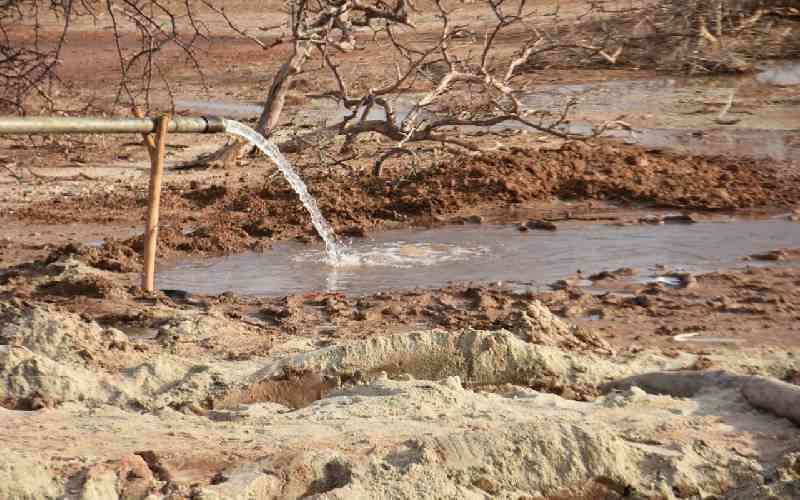By Alex Mathuku
Kenya: On the Wednesday of March 12, 2014, a curious assembly converged on the YMCA facility in Nairobi.
Meeting under the wings of the so-called SGR Public Forum, the variegated crowd, mainly consisting of civil society activists and other career sirens then proceeded to pour all manner of vitriol on the proposed standard gauge railway project.
Incestuous dialogue
Curiously, it would appear that the only criteria for invitation to this forum, was opposition to the SGR project. So it is safe to say that no debate, which the term “forum” would imply, was had.
It was an incestuous dialogue among people with the same opinion, whose history shows a knee jerk predilection to oppose anything that is initiated by Government, any government. In what looks like a part of an orchestrated campaign against the SGR, most likely with a puppet master, the event was on live TV.
As part of its resolutions, the YMCA group now seeks to take its seemingly well-oiled campaign against the SGR project to another level. To report with precision, the words used were “picketing or mass action.” It would appear that having failed in their attempt to sustainably orchestrate certain politicians against the SGR, including a lame duck and failed Opposition, opponents of the project have now latched onto career civil society activists, with perhaps the aim of moving the debate from political rallies to the streets.
Our Bill of Rights guarantees the right to hold an opinion. But one would hope that even in this apparently lucrative pursuit, one would display some modicum of fidelity to fact and science. That they would take time off to interrogate some of the “talking points” they may have been handed by those opposed to the project to parrot.
One of the main arguments by the activists is the assertion that an upgrade of the existing line at Sh20 billion would be much cheaper than building a new SGR line, at Sh327 billion. This is like comparing a Toyota to a Mercedes Benz car. What is conveniently ignored is the fact that the inefficiency of the current line is just down to two words: gradient and curvature.
Like a snake
The builders of the Kenya-Uganda line did not have the technology to cut through hills like we do today. The result is a track that meanders like a snake. Common sense will tell you that the fastest way between two points is a straight line on a flat or sloping surface. Moving from Mombasa to Nairobi entails taking off at sea level and then rising to an altitude of 1,795 metres above sea level in a relatively short distance of about 485 kilometres.
The result is that even if you upgraded the existing line, its efficiency would still be constrained by its curvature and steep gradient. It is like painting a donkey in a zebra’s colours. The assumption that the SGR line will not go beyond Nairobi is just that. This is a trilateral project, signed on and committed to by the Presidents of Kenya, Uganda and Rwanda.
The next phase is Nairobi-Malaba, onward to Kampala and Kigali. It is interesting that while the “forum” supports the need for seamless connectivity, it is advocating that Kenya sticks with its old metre gauge line, while the rest of East Africa goes SGR! This would be the surest way to kill the port of Mombasa and the Northern Corridor, which accounts for 80 per cent of all economic activity in Kenya.
And this at a time when our main competitor Tanzania, is gearing up for massive investments on its port and hinterland infrastructure! There is also the simplistic argument, that the line will not be commercially viable, with the old line still in existence.
Projected demand for cargo and passenger transport within the Northern Corridor shows otherwise. The economic benefits of the SGR line are legion and go beyond the massive economic opportunities and jobs it will create during construction. For starters, the line has the potential to add a material 1.5 per cent to national wealth (GDP).
Stay informed. Subscribe to our newsletter
Inefficient
It will reduce the cost of doing business and make Kenyan and regional firms more competitive and efficient. Currently, out of every Sh100 one pays for a good in Kenya, a material Sh45 goes to pay for an inefficient transport system. This needs to be brought down to sub-15 per cent levels as successful economies like India, Russia and China have managed to do.
By freeing up our overstretched roads, substantial savings will be made in maintenance, not to mention the environmental benefits. Haulage of goods by rail is also less prone to pilferage.
True, the project will cost money, but then Kenya needs to bite the bullet. What is important is the huge return on investment. The SGR is a viable foundation for the sustainable economic prosperity of this country and the region.
The writer is a public policy researcher and experiential education expert.
 The Standard Group Plc is a
multi-media organization with investments in media platforms spanning newspaper
print operations, television, radio broadcasting, digital and online services. The
Standard Group is recognized as a leading multi-media house in Kenya with a key
influence in matters of national and international interest.
The Standard Group Plc is a
multi-media organization with investments in media platforms spanning newspaper
print operations, television, radio broadcasting, digital and online services. The
Standard Group is recognized as a leading multi-media house in Kenya with a key
influence in matters of national and international interest.
 The Standard Group Plc is a
multi-media organization with investments in media platforms spanning newspaper
print operations, television, radio broadcasting, digital and online services. The
Standard Group is recognized as a leading multi-media house in Kenya with a key
influence in matters of national and international interest.
The Standard Group Plc is a
multi-media organization with investments in media platforms spanning newspaper
print operations, television, radio broadcasting, digital and online services. The
Standard Group is recognized as a leading multi-media house in Kenya with a key
influence in matters of national and international interest.







